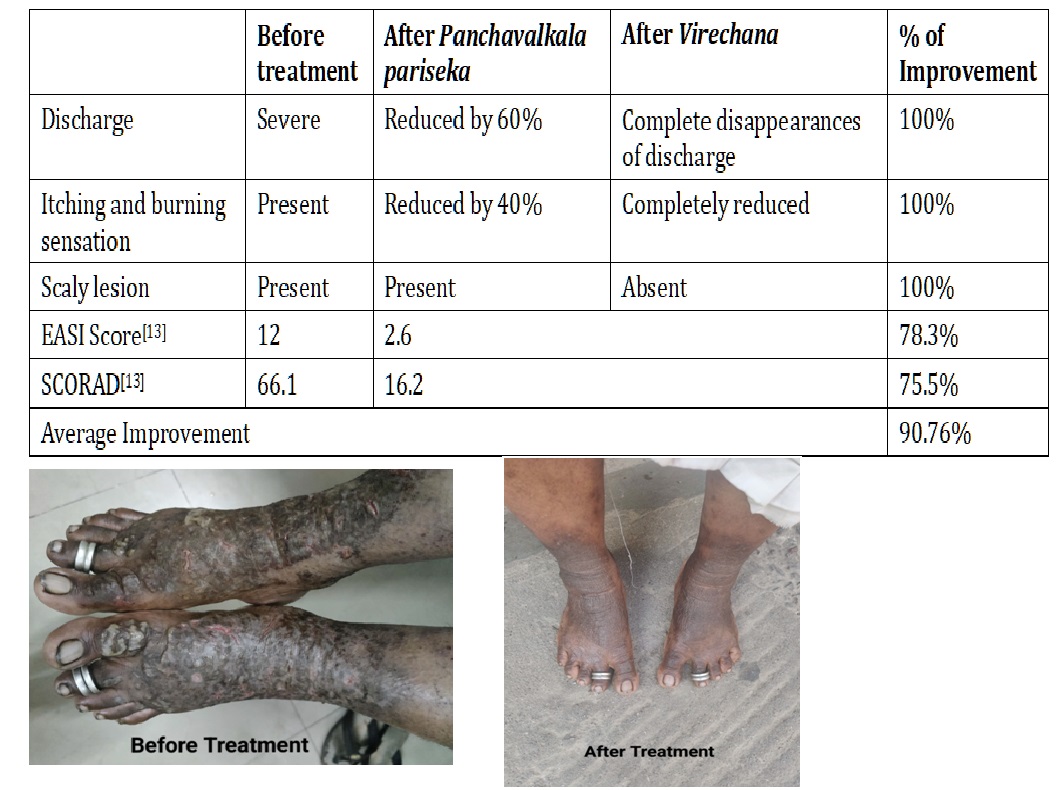Integrating Panchavalkala Kashaya Seka and Virechana in the Management of Vicharchika
DOI:
https://doi.org/10.47070/ayushdhara.v11i6.1846Keywords:
Vicharchika, Eczema, Panchavalkala Kashaya seka, Virechana, Dantiharitaki lehaAbstract
Vicharchika, one among the Kshudra kushta is included under Rakta pradoshaja vyadhi. It is very difficult to cure and there are remissions. It has a very close resemblance to eczema which is characterized by oedema, skin thickening with pronounced skin markings secondary to chronic rubbing, exudate, fissures and dyspigmentation. Prevalence has increased dramatically since the early 1980s, and the disease now affects at least 20% of school children and 5-10% of adults in UK. Materials and Methods: A female patient aged 52 years presented with blackish colored lesions over bilateral foot associated with itching since 15 years was diagnosed as Vicharchika. The patient was treated with Panchavalkala Kashaya seka followed by Virechana with Dantiharitaki lehya and oral medications. Results: There was significant improvement in overall symptoms. Conclusion: Contemporary medicine offers moisturizers, anti-histamines and anti-inflammatory drugs for very long time where as on other hand, Panchakarma therapies can target root cause of the Vyadhi and provide more promising results.
Downloads

Downloads
Published
Issue
Section
License
Copyright (c) 2024 AYUSHDHARA

This work is licensed under a Creative Commons Attribution-NonCommercial-ShareAlike 4.0 International License.


